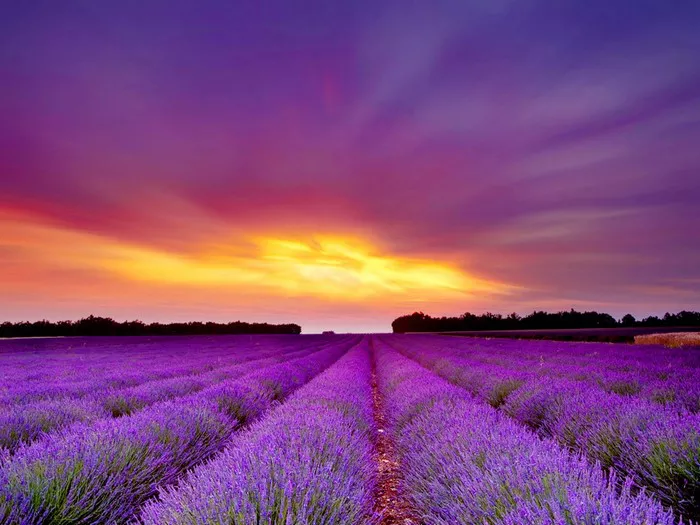Lavender, with its delicate purple hues and soothing fragrance, has charmed gardeners and enthusiasts for centuries. Beyond its aesthetic appeal, lavender holds deep symbolic meanings and therapeutic properties, making it a beloved choice for gardens, aromatherapy, and culinary endeavors. In this comprehensive guide, we delve into the significance of lavender, explore its various types, and provide essential insights into cultivating this versatile herb.
Understanding the Symbolism of Lavender
Throughout history, lavender has been associated with an array of symbolic meanings, spanning cultures and civilizations. Here are some of the predominant symbolisms attributed to this enchanting flower:
Purity and Tranquility: Lavender’s clean, fresh scent evokes a sense of purity and tranquility, making it a popular choice for aromatherapy and relaxation practices. Its calming properties have been cherished for promoting peace and serenity in both mind and body.
Devotion and Love: In the language of flowers, lavender symbolizes devotion and love. Its elegant blooms and intoxicating fragrance have long been used to express affection and admiration, making it a cherished gift for loved ones.
Healing and Protection: Lavender is renowned for its medicinal properties, particularly in traditional herbal medicine. From soothing headaches to relieving stress, lavender is revered for its healing and protective qualities, both physically and spiritually.
Elegance and Sophistication: With its graceful appearance and timeless charm, lavender exudes an air of elegance and sophistication. Whether adorning a bouquet or enhancing a garden landscape, lavender adds a touch of refinement to any setting.
Exploring the Main Types of Lavender
While lavender encompasses numerous species and cultivars, several main types are commonly cultivated for their distinct characteristics and uses. Here are some of the primary varieties:
English Lavender (Lavandula angustifolia): Also known as true lavender, English lavender is prized for its intense fragrance and rich essential oil content. This variety typically features slender, aromatic spikes adorned with small, fragrant flowers in shades of purple or blue. English lavender is renowned for its culinary applications, as well as its therapeutic properties in aromatherapy.
French Lavender (Lavandula dentata): Distinguished by its serrated foliage and unique toothed blooms, French lavender offers a delightful twist on traditional lavender varieties. Its vibrant flowers and aromatic foliage make it a popular choice for ornamental gardens and container plantings. French lavender is also valued for its culinary uses and aromatic oils.
Spanish Lavender (Lavandula stoechas): Characterized by its distinctive “butterfly” blooms and compact growth habit, Spanish lavender adds a touch of whimsy to any garden landscape. Its vibrant bracts and aromatic foliage make it a favorite among gardeners seeking a splash of color and fragrance. Spanish lavender is also prized for its drought tolerance and resilience in hot, sunny climates.
Lavandin (Lavandula x intermedia): A hybrid of English and spike lavender, lavandin combines the best qualities of both parent species, resulting in robust plants with abundant blooms and enhanced fragrance. Lavandin is valued for its high essential oil content, making it a popular choice for aromatherapy, perfumery, and herbal remedies. This hardy variety is well-suited to a variety of growing conditions, from temperate gardens to Mediterranean climates.
Cultivating Lavender: Essential Tips for Success
While lavender is a relatively low-maintenance plant, proper cultivation techniques are essential for ensuring healthy growth and abundant blooms. Here are some essential tips for growing lavender:
Selecting the Right Location: Lavender thrives in sunny, well-drained locations with good air circulation. Choose a site with full sun exposure and avoid areas prone to standing water or excessive moisture.
Preparing the Soil: Lavender prefers lean, alkaline soil with good drainage. Amend heavy clay or compacted soils with organic matter, such as compost or sand, to improve drainage and aeration.
Planting Lavender: When planting lavender, space the plants 12 to 18 inches apart to allow for adequate airflow and room for growth. Dig a hole slightly larger than the root ball and backfill with amended soil, gently firming the plant in place.
Watering Carefully: While lavender is drought-tolerant once established, it benefits from regular watering during the first growing season to promote root establishment. Water deeply but infrequently, allowing the soil to dry out between waterings to prevent root rot.
Pruning and Maintenance: Prune lavender regularly to encourage bushy growth and prevent legginess. Remove spent flowers and trim back woody growth in the spring to promote new growth and maintain plant vigor.
Harvesting Lavender: Harvest lavender flowers when they are in full bloom but before they begin to fade. Cut stems in the morning after the dew has dried but before the sun is at its peak to preserve the plant’s essential oils and fragrance.
Preserving Lavender: Dry lavender flowers by hanging bunches upside down in a cool, dry place away from direct sunlight. Once dry, store the flowers in airtight containers to preserve their fragrance and flavor for culinary or aromatherapy purposes.
By following these essential guidelines, you can cultivate lavender successfully and enjoy its beauty, fragrance, and myriad benefits year after year.
Conclusion
Lavender holds a special place in the hearts of gardeners, herbalists, and enthusiasts worldwide, thanks to its timeless beauty, rich symbolism, and versatile uses. Whether adorning a garden landscape, enhancing a culinary creation, or promoting health and well-being, lavender continues to captivate and inspire all who encounter its enchanting allure. By understanding its significance, exploring its diverse varieties, and mastering essential cultivation techniques, you can unlock the full potential of lavender and experience the magic of this beloved herb firsthand.


